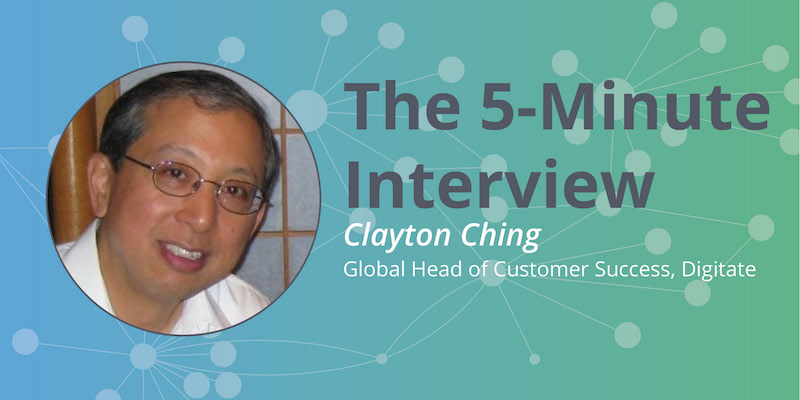Enterprise AI for IT Ops: 5-Minute Interview with Clayton Ching, Global Head of Customer Success at Digitate

Senior Manager, Content, Neo4j
4 min read

“I believe everyone in the IT ops space is going to have to implement graph data a lot sooner than they think,” said Clayton Ching, Global Head of Customer Success at Digitate.
IT operations is complex, with thousands of systems and connections and dependencies between those systems. Overlay the business context of those systems and you’ve got an ideal fit for graph technology.
In this week’s five-minute interview, we discuss why Clayton Ching views a graph database as a requirement for Ignio, Digitate’s flagship product for cognitive automation of complex IT infrastructure
Talk to us about how you guys use Neo4j at Digitate.
Clayton Ching: We’re in the IT operations space. Ignio is designed around the concept of cognitive automation.
We have several products in the mix right now: Ignio for IT operations, or IT ops; Ignio for Batch; and Ignio for SAP ERP. These three product offerings fundamentally operate off of our foundational platform called Ignio.
One of the key elements of Ignio is that it can understand context across IT enterprise applications and infrastructure. We have to understand the dependencies and the relationships in that structure. In other words, we have to understand that server A is connected to server B, server B is connected to an app server, that app server is connected to a web server, and there may be databases attached to these systems.
Within the enormous complexity of an IT infrastructure, we have to understand dependencies and the relationships that are attached to them. In addition to that, we also have to understand the business context behind all of this and the relationships within the business flow.
Dealing with that type of complexity and the enormity of an IT enterprise, we then require the use of Neo4j, which provides us with graph data that leads us very nicely to being able to create, update and understand relationships within an IT enterprise.
What made you choose Neo4j
Ching: We chose Neo4j because it is the leading graph database solution on the market. We were very impressed with your technology. We were very impressed with your customer base. And we’re certainly impressed with our dealings with the individuals within the company. I think all of that coming together really helped the selection process.
Can you talk to me about some of your most interesting or surprising results you’ve had while using Neo4j?
Ching: We are now able to visualize and understand the relationships within an extremely complex IT environment. We couldn’t do that before. At least, we could not accomplish it easily.
We were working with other types of databases, for instance, relational databases and NoSQL databases. Generating relationships and querying information in that type of environment is just an enormous task.
What we’re finding right now is that with Neo4j, we’re able to accomplish a lot of these activities a lot more efficiently, a lot more effectively, and in ways that we never could before.
If you could start over, taking everything you know now, what would you do differently?
Ching: I think we’ve learned that we should have started with a graph database to begin with. It would have been a much easier implementation, and it would have given us with the ability to understand the relationships of the system, which we’ve always required and have never been able to do as effectively. Our big takeaway is that we should’ve done this sooner.
The current release of Ignio does not operate on Neo4j’s graph database. It does not use graph data at all right now. That is our current release. Our next release will use the Neo4j solution.
What do you think about graphs and AI?
Ching: Naturally, there are many components in the creation of a proper AI framework. You’re going to need to look at not only data – starting with contextual awareness – but also at the different types of ways of understanding data and analyzing different types of data required in an AI environment. I think graph is going to play a key role in that process, along with other types of data and methods.
To move into the AI world, you’re going to need to look at data from many different perspectives. You’re going to have to store. You’re going to have to render. You’re going to get analytics from data from a variety of different sources of which, I believe, graph data will be a fundamental part for a long time to come.
Where do you feel the future of graph technology is headed within the IT operations space?
Ching: I think graph data is an absolute requirement. I believe everyone in the IT ops space is going to have to implement graph data a lot sooner than they think.
What graph data provides is the reduction of the complexity. It takes everything to a point where you’re able to understand relationships and context in a way that a typical database simply cannot provide. A few years from now – and I think it will be a lot sooner – it’ll be an absolutely essential part of products in the IT ops space.
Want to share about your Neo4j project in a future 5-Minute Interview? Drop us a line at content@neo4j.com








